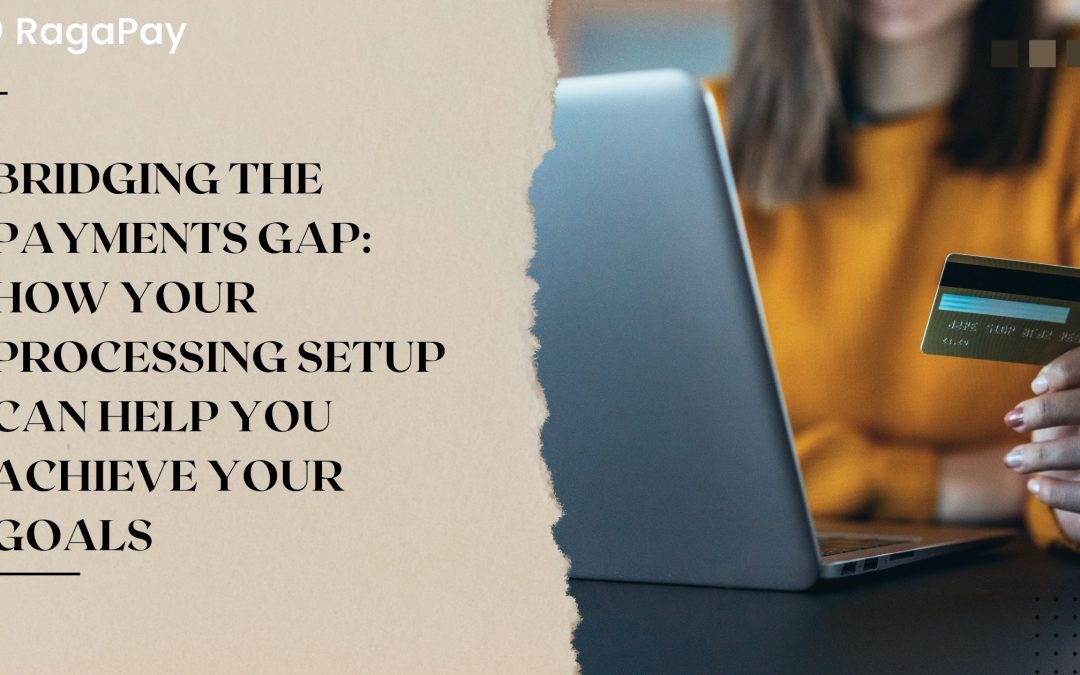Introduction:
In today’s fast-paced digital world, having a robust and efficient payment processing setup is crucial for businesses of all sizes. Whether you’re a startup or an established enterprise, your ability to seamlessly accept and manage payments can directly impact your bottom line and overall success. In this blog post, we will explore the concept of the “payments gap” and discuss how optimising your payment processing setup can help you achieve your business goals.
Understanding the Payments Gap:
The payments gap refers to the disparity between the payment options your customers prefer and the methods you currently offer. It’s essential to recognize that consumer payment preferences have evolved significantly over the years. Customers now expect convenient, secure, and flexible payment methods that cater to their needs, whether it’s online, mobile, or in-store transactions.
Identifying Your Business Goals:
Before assessing your payment processing setup, it’s crucial to identify your business goals. Are you aiming to increase revenue, improve customer satisfaction, expand into new markets, or reduce operational costs? By clarifying your objectives, you can align your payments strategy with your broader business strategy, creating a seamless experience for your customers and maximising your chances of success.
Assessing Your Current Payments Setup:
To bridge the payment gap, you need to assess your existing payment setup and identify areas for improvement. Start by evaluating the payment methods you currently offer. Are you providing the payment options that your customers prefer? Consider conducting surveys, analysing customer feedback, and studying industry trends to gain insights into emerging payment preferences.
Next, evaluate the user experience of your payment process. Is it intuitive and user-friendly, or do customers encounter hurdles during checkout? A complicated or lengthy payment process can lead to cart abandonment and frustrated customers. Streamlining the checkout experience can significantly improve conversion rates and customer satisfaction.
Leveraging Technology to Close the Gap:
The advancement of technology has revolutionized the payments landscape, offering businesses a wide range of solutions to bridge the payments gap. Consider the following strategies:
Embrace omnichannel payments: Consumers expect a seamless experience across multiple channels, including online, mobile, and in-store. Adopt an omnichannel approach that integrates your payments across various platforms, ensuring a consistent experience and reducing friction points for customers.
Offer a variety of payment methods: Understand the payment preferences of your target audience and expand your offerings accordingly. In addition to traditional methods like credit cards and cash, consider integrating digital wallets, mobile payment solutions, and even cryptocurrencies to cater to a broader customer base.
Prioritise security and compliance: With the rise of cyber threats and data breaches, ensuring the security of your customers’ payment information is paramount. Implement robust security measures, including encryption, tokenization, and compliance with industry standards such as PCI DSS (Payment Card Industry Data Security Standard).
Leverage data analytics: Harness the power of data analytics to gain insights into your customers’ payment behaviours and preferences. Analysing transaction data can help you make informed decisions, personalise your offerings, and identify opportunities for optimization.
Partner with a trusted payment service provider: Consider partnering with a reputable payment service provider (PSP) that offers a comprehensive suite of payment solutions. A PSP can provide you with the necessary infrastructure, technology, and expertise to optimise your payment processing setup and stay ahead of evolving trends.
Conclusion:
Closing the payment gap requires a proactive approach and a commitment to meeting the evolving needs of your customers. By assessing your current payment processing setup, understanding your business goals, and leveraging technology and industry best practices, you can bridge the gap and create a seamless payment experience for your customers. Embracing innovation and prioritising customer convenience and security will not only enhance customer satisfaction but also position your business for long-term success in the competitive landscape of the digital economy. Remember, the payment processing setup is not just a means to an end but a strategic tool that can propel your business towards its goals. So, don’t overlook the power of optimising your payment infrastructure and reaping the benefits it can bring to your overall business growth. Ragapay is a payment service provider for highrisk businesses, Contact us for high risk merchant account.

